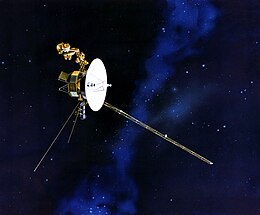 Background: Voyager 1 is a space probe launched by NASA on September 5, 1977. Even after 40 years, the spacecraft still communicates with the Deep Space Network to receive routine commands and return data. It is currently at a distance of 13 billion miles from the Sun and is the farthest human-made object from Earth.
Background: Voyager 1 is a space probe launched by NASA on September 5, 1977. Even after 40 years, the spacecraft still communicates with the Deep Space Network to receive routine commands and return data. It is currently at a distance of 13 billion miles from the Sun and is the farthest human-made object from Earth.Voyager 1's extended mission is expected to continue until around 2025 when its radioisotope thermoelectric generators will no longer supply enough electric power to operate its scientific instruments.
Main story: Voyager 1 hadn't used its four "trajectory correction maneuver" (TCM) thrusters since November 1980, during the spacecraft's last planetary flyby — an epic encounter with Saturn. But mission team members fired them up again Tuesday (Nov. 28), to see whether the TCM thrusters were still ready for primetime.
"The Voyager flight team dug up decades-old data and examined the software that was coded in an outdated assembler language, to make sure we could safely test the thrusters," Chris Jones, chief engineer at JPL, said in the same statement.
The little engines passed the test with flying colors, NASA officials said.
"With these thrusters that are still functional after 37 years without use, we will be able to extend the life of the Voyager 1 spacecraft by two to three years," Voyager project manager Suzanne Dodd, also of JPL, said in the same statement.
Read more at https://www.space.com/38967-voyager-1-fires-backup-thrusters-after-37-years.html
No comments:
Post a Comment